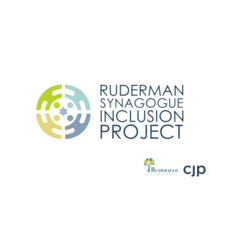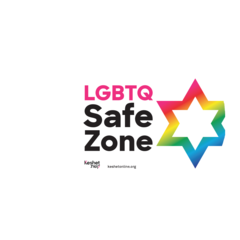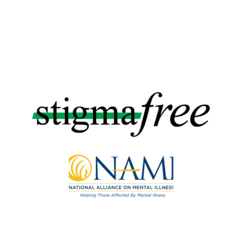Rosh Hashanah 2019/5780
Good yom tov. This is the second, and final, year that I have the honor and privilege of speaking with you on Rosh Hashanah, and honestly, this time feels very different than the first time. Last year my Presidency was just beginning, and I had a list of plans for what I hoped to accomplish, or at least pursue, with the Board and with you. But, as Rabbi Jaffe reminded me recently, men plan and God laughs, so while I am proud of the things we managed to accomplish, some of them were not necessarily the things we expected to be doing, and others remain a work in progress. And standing here today the end of my Presidency is beginning to come into view, and there is only a finite amount of time (256 days and about 12 hours, but who’s counting) left for us to move forward together before you continue to move forward without me, or at least without me in this role.
Many of you were here in the sanctuary a couple of weeks ago when Sarah Hurwitz, who was Michelle Obama’s speechwriter, spoke to us about her journey to rediscover Judaism as an adult, as described in her new book “Here All Along”. In the book Sarah writes that when the First Lady approached the topic for a speech, she always seemed to be asking herself, “What is the deepest, most important truth I can tell at this particular moment?”. So, while I do not promise to measure up to the standards set by the team of Obama and Hurwitz, this seems like an approach worth borrowing, especially on Rosh Hashanah.
In this High Holy Day season, we begin with Cheshbon Hanefesh, the accounting of the soul, where we examine what we have done, how we have succeeded in living the life we want to live, where we have missed the mark and therefore wish to change, and what things we have done that require us to ask the forgiveness of others and of ourselves. As we move into the Rosh Hashanah and Yom Kippur services, we gather together for a communal confession, aware that we are imperfect and broken, and conscious of our mortality, uncertain who shall live and who shall die in the year ahead.
In his book about the High Holy Days, Rabbi Alan Lew expands upon the writings of Rebbe Nachman of Breslov as follows, “All the world is a narrow bridge, Rebbe Nachman said, a narrow bridge between the nothingness at the beginning and the nothingness at the end. We spend our whole lives on this precarious span, unaware that we are even on it. Then one day we wake up and see it, and we feel terror. We say to ourselves, My God, what have I been doing with my life?”
Rabbi Lew also retells the story of Alfred Nobel, the inventor of dynamite. When Nobel’s brother died, a newspaper mistakenly published Nobel’s own obituary instead of his brother’s, writing “Dr. Alfred Nobel, who became rich by finding ways to kill more people faster than ever before, died yesterday.” Nobel was troubled by that characterization, and set out to change it, eventually establishing the Nobel prizes that recognize individuals whose accomplishments result in the greatest benefits to mankind. And with that Nobel was able to re-write his obituary.
Think of how powerful that is, to be able to wake up and see our lives as they really are, to read our own obituary and understand how we will be remembered. And if we could, what would that mean for how we would want to act in the time we have left, and how we could try to change.
For me the awareness of mortality has been more than theoretical this year. Just a few days ago I attended the funeral of a longtime congregant and Brotherhood member in the morning, and the shiva for the father of a good friend from the Board in the evening, both of whom died from aggressive forms of cancer. For about a week last December, I sat with a diagnosis of pancreatic cancer myself, which I was told had a 30% survival rate. Fortunately, further tests came back with a different result, and I eventually had a rather surreal conversation with my primary care physician who told me “congratulations, you just won the lottery, you have lymphoma”. So, the first five months of my year were spent undergoing chemotherapy, and my scans are now clean and it looks like the treatments were successful. And as I grapple with the question of how I would want my obituary to read, and what I should be doing in the meantime to make that happen, the question has a lot more poignancy now than it did before.
And one of the things I am grateful for is the reaction of this community as I dealt with my illness this year. I was fairly open with the Board and other friends about what was going on with me, and the support I received was wonderful, and I cannot thank people enough. But as I gather my thoughts for my talk today it occurs to me that even though my natural inclination is to want to be self-sufficient and not reliant on others, I had underestimated the power of community in my life. And it is no accident that at this time of year, while we examine our individual lives, and ask each other for forgiveness, and explore how we can and should change, that we gather together as we do it. Rabbi Lew says, describing our existential predicament on Rosh Hashanah, “This is real. And we are utterly unprepared. And we have nothing to offer but each other and our broken hearts. And that will be enough.”
“All the world is a narrow bridge,“ Rabbi Nachman wrote, and he concluded, “and the essential thing is not to be afraid.”
And may those things be so for each of us this year.
--
As I look back on the year that is ending, and ahead to the one that is beginning, in a little bit of congregational Cheshbon Hanefesh, I see both challenges and opportunities for Temple Isaiah, as we move forward together. One of the unplanned things from last year was our finding ourselves undertaking a rabbinic search for a new Associate Rabbi, after Rabbi Perlman accepted an opportunity to become a senior rabbi in California. But even though it was unexpected, I feel like if we accomplish nothing else while I am President, then my involvement in leading the search that led to our finding Rabbi Maimin will have made my term a success. I am so glad that she is now part of our congregation, and I am confident that as you have a chance to get to know her, you will come to feel the same.
We have had other challenges during the year. The attack at the Tree of Life synagogue in Pittsburgh in October was a wake-up call that caused us to re-examine how we think about security in our building, not to mention our security as Jews in this country. As a Board we had already invested in our physical infrastructure for security, installing and upgrading things like locks and cameras and video intercoms and panic buttons. Suddenly we had to use them all differently, and move from an open to a locked building, with security officers at the doors when school was in session, or during services, or for other gatherings, and train our staff and teachers on things like how to behave if an active shooter entered our building, which was previously unimaginable. And we are still learning how to deal with this new reality, which I fear will be with us for some time.
We have other opportunities before us, works in progress, especially in the areas of education and engagement. With our religious school, our clergy and staff have created an innovative, dynamic, and inclusive program full of choice, challenge, and connection, that helps give our children, from kindergarten up through high school, the tools and perspective they will need to live a Jewish life.
Another priority we have identified for this year is engagement. We have committed to investing in things which will, we hope, foster member retention and involvement at key transition points in our congregants’ lives, deepen relationships between congregants; guide congregants and prospective members toward meaningful involvement; and build stronger programs and offerings.
And as an institution we are also committed to creating a culture of philanthropy in our congregation. We know that each of you already practices philanthropy to support the causes and issues that matter most to you, and that philanthropy, at whatever level that is meaningful to you, is an expression of your personal values, and part of the answer to the question about what kind of difference your life can make. And over the past couple of years, and especially now as we grow close to the end of the current matching campaign sponsored by the Lavine family, we have been talking more about the things going on at Isaiah that you might want to be aware of as you choose what to support.
The initiatives I spoke of earlier, namely:
- Security, which will require additional investments in training and physical changes to the building as well ongoing funding for hired security personnel, and
- Education, where school tuition and fees do not cover our costs, and we have added support for special needs and different student learning styles in our classrooms, and may soon have to look at ways to increase the physical space for education in our increasingly crowded building, and
- Engagement, which will require investments in staff and outreach and programs to provide entry points for meaningful and deeper connections,
all of those come with costs. As over the weeks and months ahead we continue to talk about philanthropy, and opportunities to support these and other initiatives financially (which I am not going to say another word about today on Rosh Hashanah) I hope you will be receptive. And for all of the support you have provided so far, I say thank you.
--
In June of 1959 a little boy that his mother liked to call Barry Steven was just finishing first grade and was getting ready for summer, more than likely playing with friends on the streets near Ocean Parkway in Brooklyn, or heading off to the beach and pool at the Brighton Beach Club, with absolutely no clue that 60 years later he would be standing here today talking to you.
At the same time in Lexington, MA, a group of forty families who were part of the Arlington-Lexington-Bedford Jewish Community Center were meeting to decide on their future. The Rabbinic Search committee had made a commitment to the hiring of a Reform Rabbi, but this was overruled by the majority of the Community Center, which preferred to hire a Conservative Rabbi. So, the forty families decided to move forward on their own. In December of 1959 the congregation, by then named Temple Isaiah, became a chartered member of the Union of American Hebrew Congregations, which is today known as the Union for Reform Judaism.
But as I think back to that summer of 1959, and that oblivious young boy in Brooklyn, I cannot help but also wonder about the young girl or boy who may be out there right now, in Lexington or Bedford or Arlington, or maybe even Brooklyn, who may, 60 years from now, be speaking on Rosh Hashanah as President of Temple Isaiah. What will our congregation look like then? How will those who follow us, which by the way might also include some of you in this sanctuary today, live their Jewish lives, and how will that differ from the practices that we are used to?
At the end of her book, Sarah Hurwitz writes about demographic changes in our Jewish community in America and how they influence the future of synagogues. She says that synagogues have traditionally focused on the needs of families, which typically were made up of Jews marrying other Jews and raising Jewish children. But today only half of adult American Jews are currently married. And for non-Orthodox American Jews who have gotten married since 2000, the intermarriage rate is 72 percent. As for children, only 39 percent of non-Orthodox American Jews ages twenty-five to fifty-four have any children at home. So, it is not surprising that rates of synagogue participation are down. And as interfaith marriage becomes commonplace, which we can see as we look around at ourselves, new questions are raised about how to address the needs of members coming from different backgrounds than they did in the past. And as we look outside the walls of our building, we see new models of Jewish engagement that do not require the walls of a synagogue to flourish, and that more and more are attracting Millennials and the younger generations that follows them.
So how do we think about this future, and what are its implications for Temple Isaiah? I do not know the answer to those questions, but I do think it is a conversation that we should be having, with the Board, and with you, and I hope to see that begin this year.
For much of this year we will be celebrating the 60th Anniversary of Isaiah in a variety of ways at a variety of events, from storytelling sessions to a sukkah hop to a sock hop to a gala, and more. I was delighted last Sunday to be sounding the ceremonial air horn on Lincoln Field as dozens of our members and their children, all moving forward together, took part in races and walks in the 6K event that kicked off the celebration. You’ll be hearing more about the 60th in the weeks ahead, and if you have not already noticed, our theme for the anniversary celebration, and maybe for the year, is “Moving Forward Together”. I look forward to doing that with you, and wish you and your families a good and sweet year. L’shana tova tikatevu.





